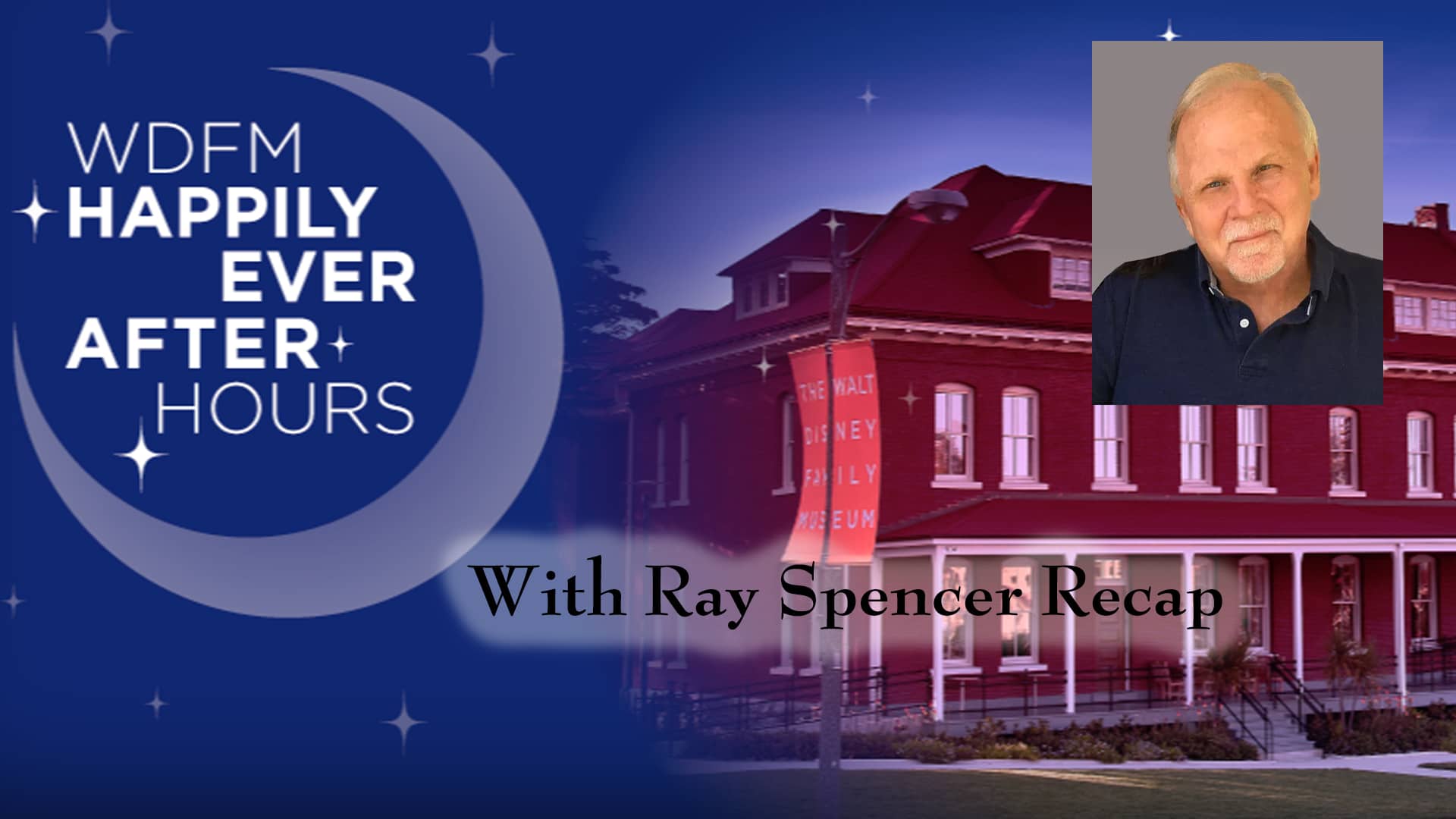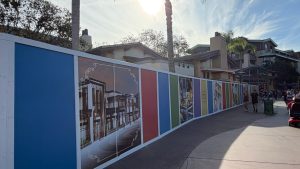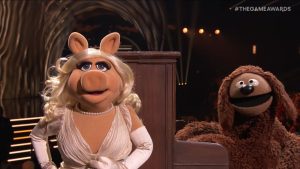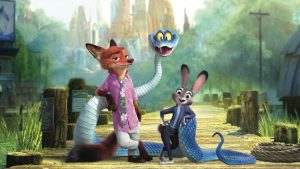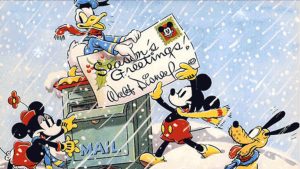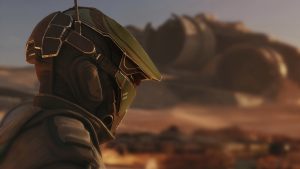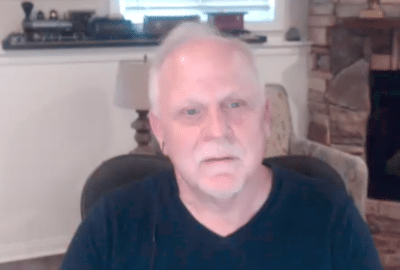 The Walt Disney Family Museum hosted a Happily Ever After Hours with Imagineer, Ray Spencer. Spencer has been a Creative Director with Walt Disney Imagineer tackling such projects as Trader Sam’s at the Disneyland Hotel, Buena Vista Street at Disney California Adventure, and the Hatbox Ghost installation for the Haunted Mansion.
The Walt Disney Family Museum hosted a Happily Ever After Hours with Imagineer, Ray Spencer. Spencer has been a Creative Director with Walt Disney Imagineer tackling such projects as Trader Sam’s at the Disneyland Hotel, Buena Vista Street at Disney California Adventure, and the Hatbox Ghost installation for the Haunted Mansion.
The interview started with discussing the Buena Vista Street project. Spencer was a great fit for heading up the project as some of his influences have been nostalgic Southern California with the actual Red Car Trolley. He recognized that California Adventure did not have the great entryway that was established by Walt Disney for Disneyland and wanted to bring in the heart, soul, and DNA of a Disney park. Spencer cited Walt’s genius of having Town Square on Main Street be an area to get acclimated and feel safe – to know where you are.
Out of research and design of the area, Union Station of Los Angeles was at one point discussed to be part of the land. That was just one of the twists and turns that went into developing Buena Vista Street. It came down to really having it be about Walt coming to California and Hollywood for the first time. Spencer thought it was a great story to tell. But, part of that decision was having polled college students and finding out they didn’t know Walt Disney was a real person! Students that they asked thought he was just a company identity, a corporate entity that was made.
The discussion funneled down to the Storytellers statue featured in the main plaza. The Partners statue, as Spencer described it, is a monument embedded in a planter. It is showing Walt after his great accomplishment of Disneyland. Since Buena Vista Street was telling the story of when Walt first started he felt it wouldn’t be appropriate to make a monument-like statue. Blaine Gibson was first asked to create the sculpture, but the great Disney artist was 92 and recognized he would not have the time for such a task. When the sculpture was complete by Rick Terry, Diane Disney Miller saw it and gave the compliment that her father would have liked it. The placement of the statue was decided because Spencer thought that Walt could have been standing on a Los Angeles street corner and one of the first sights of California would have been the Red Car.
One of his next projects was Trader Sam’s tiki bar at the Disneyland Hotel. However, it was Tom Fitzgerald that he gave credit to coming up with the tiki bar concept. The bar was to be a nostalgic Disney bar with a modern twist. The same set designer for Buena Vista Street was the one for Trader Sam’s. It was in this context that Spencer described what his role is as a Creative Director, and sometimes an art director. He must keep the “story straight” and have everyone’s ideas fit in it.
Spencer described working on the Matterhorn for the Diamond Celebration update, the Hatbox Ghost for the Haunted Mansion, and even the new effects in Big Thunder Mountain. There were great stories that came out of those projects like an elevator he was terrified of in the Matterhorn and getting motion sick on Big Thunder Mountain. That last story revealed just what Imagineers have to do: ride the rides over and over again to make sure the effects are right because there is just no other way to get the right timing!
A time of Q&A followed which revealed his depth and passion for storytelling. Spencer mentioned being able to buy into a story. Specifically, in building a Disney story, if one detail doesn’t fit the story then all of it is blown. Of the components that he recognizes make for a great story are credibility, a personal connection – especially with a single character, and research. Spencer described Walt as being an educator and storyteller. An example is with the railroad attractions where the details can reveal how it was back when they were actually used across the country.
It might have been cryptic what Spencer was saying makes up a story in a Disney park, but his telling of developing the Carthay Circle Restaurant shed some light on it. There are two “stories” happening in the two-story building. The lounge is imagined as a place where the animators would have gotten together after work. The upstairs is the “after party of the Academy Awards” and that becomes the reason for the showcase of Oscars.
It was easy to tell that Ray Spencer has a deep passion for story-making and the detail of attractions and lands. His last projects were of the Fantasyland and Tomorrowland expansions in Tokyo Disneyland, and those are already being thought of as highly detailed. He talked about how he kept applying to Disney to get in. Persistence was something mentioned as a good thing to have to get into Imagineering. It was clear that Spencer has deep knowledge in his craft and loves the Disney DNA. Disney was not the only influence. He cited the architecture of California, but also the Knott’s Berry Farm Calico Mine Ride as being the first immersive dark ride. For him, that ride is scary and fascinating at the same time.
It was a delight to hear the stories and history of Ray Spencer at Walt Disney Imagineering. His insight into the parks also gave perspective on the legacy of Walt Disney. That, of course, was a great way to partner with the Walt Disney Family Museum. In all, it was a great Happily Ever After Hours, and it has been wonderful that the museum has been keeping them going. If you have not seen any of them, they are highly recommended! They are all virtual through Zoom, but registration is a must on waltdisney.org. I also recommend giving a donation to the museum at this time, as they are providing these particular presentations for free. This video presentation of Ray Spencer is available on the Walt Disney Family Museum Facebook page from August 22-23, and then will be a members-only portal (which is an incentive to be a member as well). Be sure to watch as there are some great stories I didn’t include in this recap!

